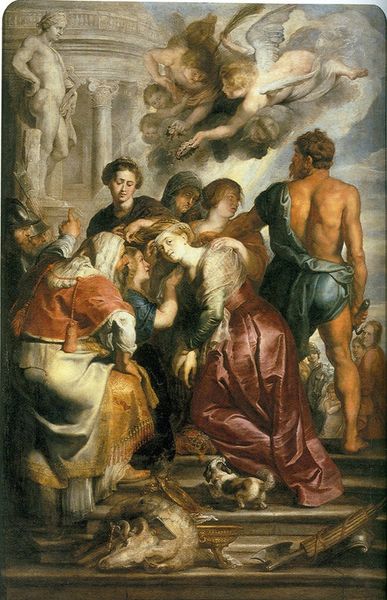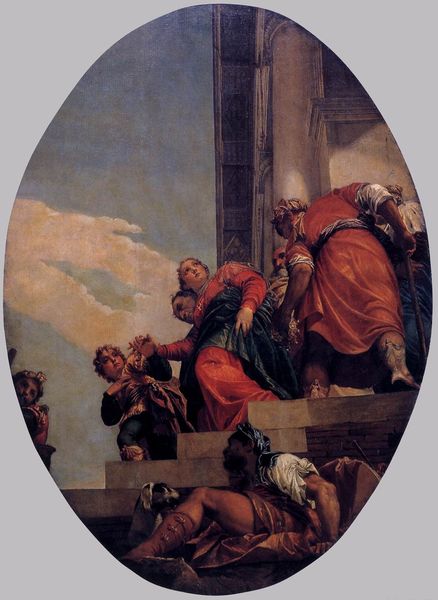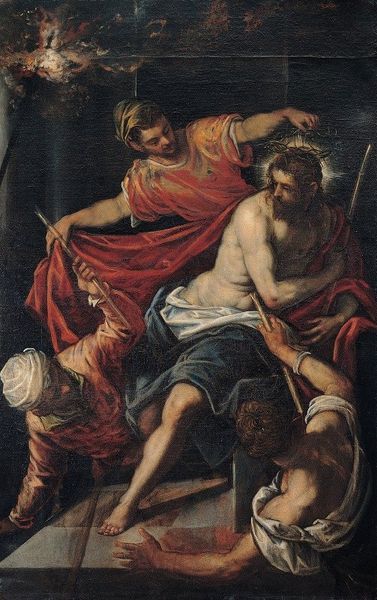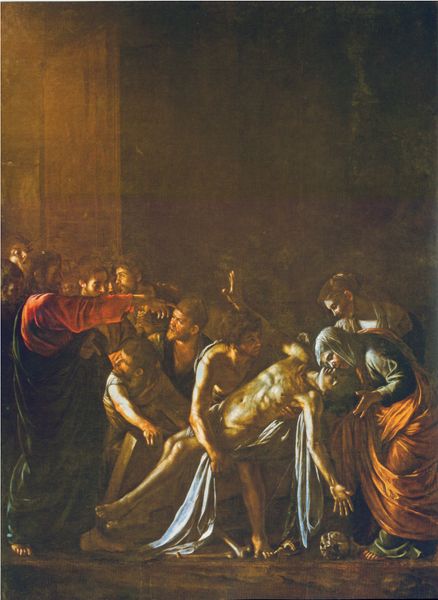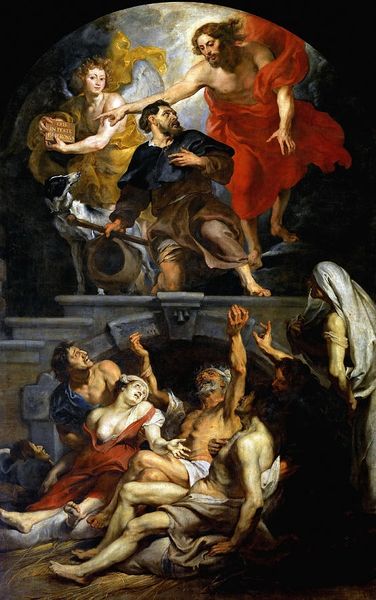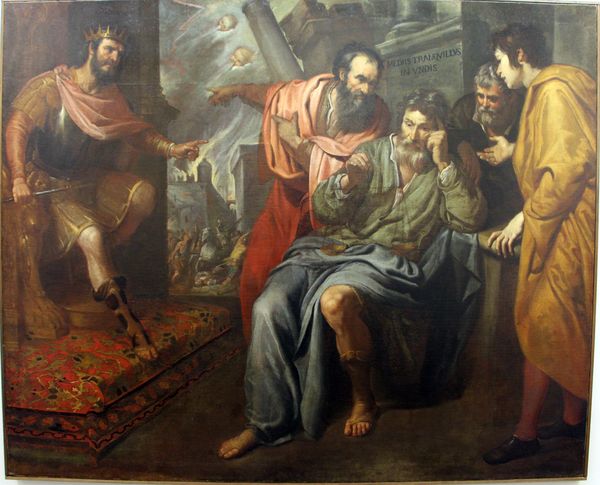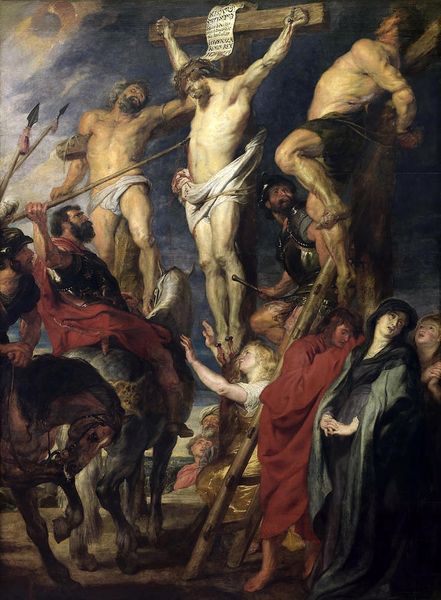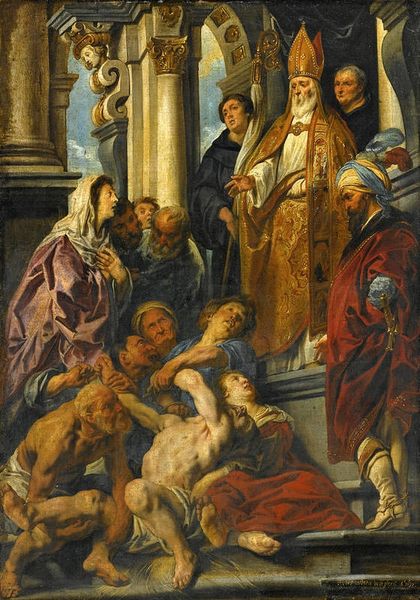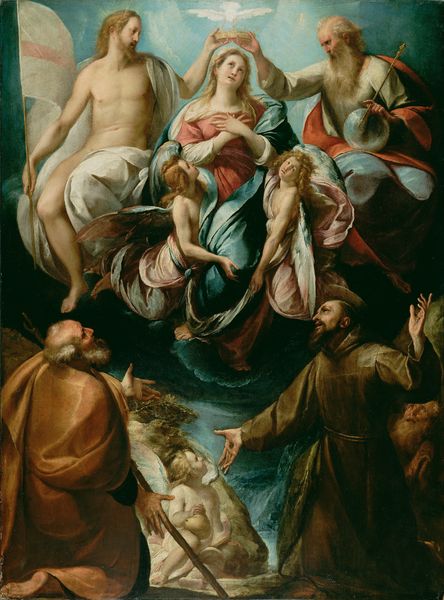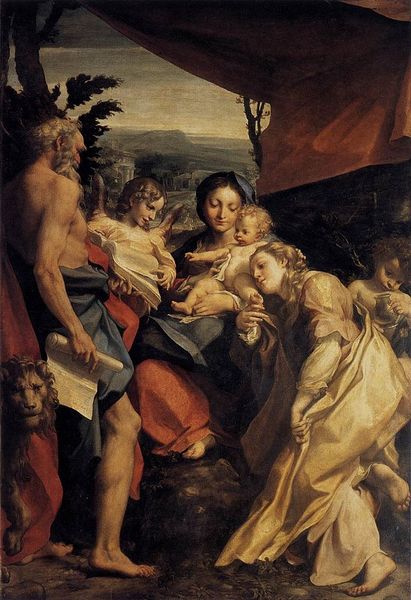
oil-paint
#
baroque
#
oil-paint
#
figuration
#
oil painting
#
history-painting
#
portrait art
Copyright: Public domain
Curator: The dynamism here is captivating! What strikes me is the energy in the drapery and the poses. The colors vibrate as well, especially in that red robe. Editor: Indeed. Let's orient our listeners. We're looking at Giulio Cesare Procaccini's 1620 oil painting, "Costantino riceve i resti degli strumenti della passione," or, in English, "Constantine Receiving the Relics of the Instruments of the Passion." Curator: Thanks! Focusing on process, what interests me is the labor and skill involved in creating this sense of drama through paint alone. Note the contrasts between smooth surfaces and rough textures. Consider also the materials employed: the pigments derived from minerals and plants, and the weaving of the canvas support. Editor: Certainly. The historical context provides another layer. Painted in the early Baroque period, it portrays Constantine's supposed finding of the instruments used during Christ’s crucifixion. It visually asserts the legitimacy and power of the Church by showcasing its relics—an ideological act meant to sway viewers and cement the Church's dominance. Curator: How do you read the theatricality? It suggests a staged performance, almost propaganda for the Church as an institution. The light and shadow seem designed to highlight the material value of the relics themselves. Editor: Precisely! The relic becomes an object of political significance. Its presentation and glorification become acts that reinforce the status of both the church and the ruler Constantine. I find it thought-provoking how these relics operated as conduits for power, mediating spiritual belief with material authority. Curator: Fascinating to think about how belief translates into objects, especially these items imbued with intense human experiences and beliefs! I have found looking through materiality to consider it in the bigger social context to be compelling, indeed. Editor: It adds such a dimension to it. And the piece overall leaves one questioning not just faith but the role visual art has to shape how we interpret the very notion of power in art's narrative throughout history.
Comments
No comments
Be the first to comment and join the conversation on the ultimate creative platform.
